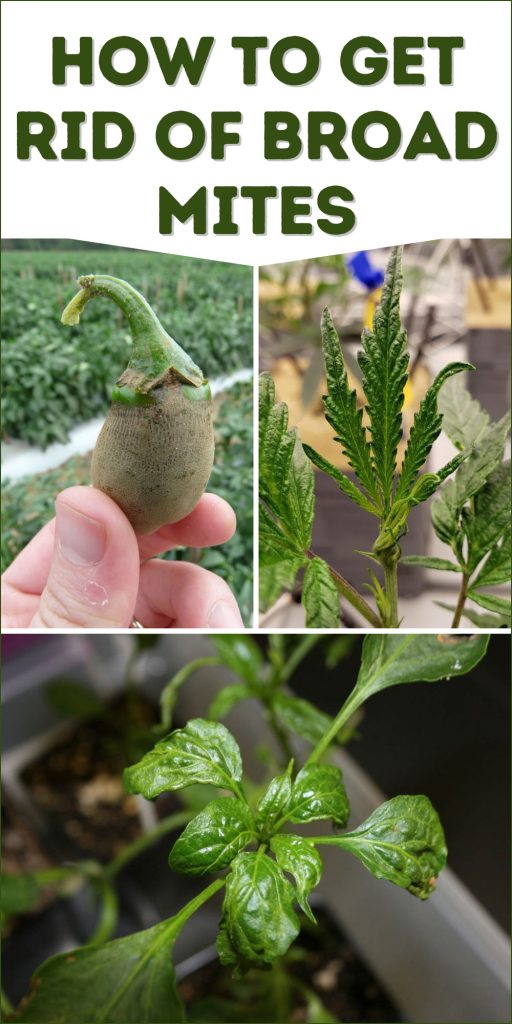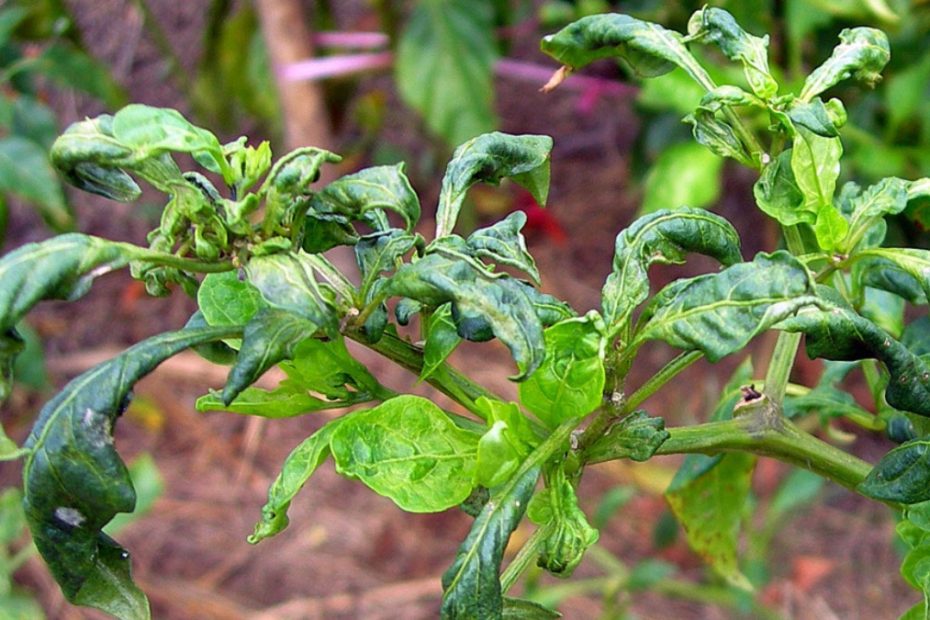Broad mites can wreak havoc on your plants, causing stunted growth and deformed leaves. These tiny pests are hard to spot but their damage is unmistakable. If you’ve noticed your plants looking less than healthy, it might be time to take action against these microscopic invaders.
Getting rid of broad mites isn’t as daunting as it seems. With the right approach, you can eliminate them and restore your plants to their former glory. In this guide, you’ll learn effective strategies to identify, treat, and prevent broad mite infestations, ensuring your garden stays vibrant and healthy.
Key Takeaways
- Broad Mite Identification: Broad mites are tiny arachnids, often undetected due to their microscopic size, but they cause significant damage like distorted leaves and stunted growth.
- Symptoms of Infestation: Key signs include twisted or cupped leaves, stunted growth, and blackened blossoms. Regular inspections are crucial for early detection.
- Preventive Measures: Maintain cleanliness, control humidity and temperature, and monitor plants frequently to prevent broad mite infestations.
- Commonly Affected Plants: Vegetables like peppers and tomatoes, ornamentals such as azaleas, fruit crops including citrus trees, and herbs like basil are particularly susceptible.
- Effective Treatments: Options include chemical treatments like miticides, insecticidal soaps, and horticultural oils, as well as organic methods like introducing beneficial insects and using essential oils.
- Long-Term Management: Consistent monitoring, sanitation, and the use of integrated pest management (IPM) techniques are essential for sustainable control of broad mites.

Understanding Broad Mites
Broad mites are tiny arachnids that affect various plants, often going undetected due to their microscopic size. Their presence can cause significant damage if not addressed promptly.
Key Characteristics
- Size: Measuring only 0.1-0.2 millimeters, broad mites are nearly invisible to the naked eye.
- Color: Typically transparent to pale yellow, which aids their camouflage on plants.
- Life Cycle: Eggs, nymphs, and adults, with the entire cycle lasting about one week in optimal conditions.
Symptoms of Infestation
If broad mites infest plants, you might observe the following symptoms:
- Distorted Leaves: Leaves may become twisted or cupped, with a glossy, bronzed appearance.
- Stunted Growth: Affected plants often exhibit slowed growth and reduced vigor.
- Blackened Blossoms: Flowers and buds may turn black and drop prematurely.
Environmental Preferences
Broad mites thrive in environments that help their spread and reproduction.
- Humidity: High humidity levels, especially above 60%, are conducive to their development.
- Temperature: Warm temperatures (around 77 to 86 degrees Fahrenheit) accelerate their life cycle.
Detection Methods
Detecting broad mites can be challenging but necessary for effective control.
- Visual Inspection: Use a magnifying glass to examine the underside of leaves and stems.
- Professional Diagnosis: Engage professional pest control services for an accurate identification.
Preventive Measures
To prevent broad mite infestations, consider these strategies:
- Maintain Cleanliness: Regularly clean tools and equipment to reduce the risk of transferring mites.
- Control Humidity: Keep humidity levels in check to hinder mite proliferation.
- Regular Monitoring: Check plants frequently to catch any early signs of mite activity.
Maintaining vigilance and understanding broad mite behavior helps protect your plants from potential damage.
Identifying Infestations
Recognizing broad mite infestations early is crucial for effective control. Early detection helps prevent significant damage to your plants.
Signs and Symptoms
Broad mites are challenging to detect due to their minute size. But, you can identify infestations based on the symptoms presented by your plants.
Physical Indicators:
- Distorted Leaves: Leaves may appear twisted, curled, or blistered.
- Stunted Growth: New growth can be limited, with young leaves looking smaller than usual.
- Blackened Blossoms: Flower buds and blossoms may develop a dark, necrotic appearance.
- Leaf Discoloration: Yellowing of leaf edges and veins could be visible.
These symptoms result from broad mites feeding on plant cells, injecting toxic saliva that disrupts normal growth.
Commonly Affected Plants
Some plants are more susceptible to broad mite infestations than others. Knowing which plants are at higher risk can inform your monitoring efforts.
- Vegetables: Peppers, tomatoes, eggplants.
- Ornamentals: Azaleas, begonias, impatiens.
- Fruit Crops: Citrus trees, melons, grapes.
- Herbs: Basil, mint.
Broad mites favor high humidity environments. Hence, plants in warm, moist conditions are at increased risk.
Regular inspections and vigilance are essential when cultivating these plants. Look for early signs and symptoms to catch an infestation before it escalates.
By understanding these indicators and susceptible plants, you can better protect your garden from broad mite damage.
Prevention Strategies
Preventing broad mite infestations involves proactive measures to protect your plants. Implementing the right strategies reduces the likelihood of infestations and ensures your garden remains healthy.
Plant Quarantine
Quarantining new plants prevents introducing broad mites into your garden. Inspect every new plant for signs of infestation, such as distorted leaves or stunted growth, before integrating them with your existing plants. Isolate new plants in a separate area for at least two weeks. During this quarantine period:
- Inspect Regularly: Use a magnifying tool to check leaves and stems.
- Monitor Symptoms: Look for yellowing leaves, blackened blossoms, or signs of leaf damage.
- Apply Preventive Treatments: Use organic insecticides or sprays approved for broad mite control.
Environmental Controls
Controlling the environment disrupts the conditions that broad mites need to thrive. Broad mites prefer warm, humid environments. By adjusting these factors, you can create an inhospitable environment for them:
- Reduce Humidity: Use fans and dehumidifiers to maintain a lower humidity level, ideally below 50%.
- Regulate Temperature: Keep your garden at a moderate temperature, avoiding prolonged periods above 80°F.
- Increase Airflow: Ensure good air circulation around plants with adequate spacing and regular pruning.
- Water Management: Avoid over-watering and manage soil moisture to prevent creating a humid microclimate.
Effective prevention involves both isolating new plants and adjusting environmental factors. These steps minimize the risk of broad mite infestations and help maintain plant health. Carry out these strategies consistently to protect your garden.
Treatment Methods
Broad mites can be challenging to eradicate, but several effective treatments are available. Treating infestations early is crucial to preserving the health of your plants.
Chemical Treatments
Chemical treatments are often sought for their effectiveness in controlling broad mite populations.
Miticides:
Specialized pesticides target mites, such as abamectin and spiromesifen. Applying these products directly to affected plants can drastically reduce mite activity.
Insecticidal Soaps:
These soaps disrupt the mites’ cell membranes and are less toxic to beneficial insects. For optimal results, thoroughly spray the affected foliage.
Horticultural Oils:
Oils like neem, mineral, and paraffinic oil suffocate mites. Apply during cooler parts of the day to prevent plant burn, ensuring full coverage on both sides of leaves.
Organic and Natural Remedies
Organic and natural remedies provide effective control without resorting to synthetic chemicals.
Beneficial Insects:
Predatory mites, like Amblyseius swirskii, feed on broad mites. Introducing these natural enemies can help keep mite populations in check.
Essential Oils:
Oils such as clove, rosemary, and eucalyptus have miticidal properties. Mix a few drops with water and spray directly on the mites.
Diatomaceous Earth:
This natural powder dehydrates mites on contact. Dust plants lightly, focusing on infested areas to create a barrier.
Water Sprays:
A strong water spray can dislodge mites from plants. Use this method as a first line of defense, ensuring to cover all plant parts.
You can combine these treatment methods for the best results, tailoring your approach based on the severity of the infestation and the specific plants affected. Consistent monitoring and timely action increase the likelihood of eradicating broad mites and protecting your garden’s health.
Long-Term Management
Effective long-term management of broad mites involves consistent monitoring and the application of integrated pest management techniques. By staying vigilant and applying these strategies, you can protect your plants from ongoing infestations.
Monitoring and Maintenance
Regular and careful monitoring is essential for managing broad mite populations.
- Regular Inspections: Check your plants weekly for signs of broad mites. Use a magnifying glass to examine the undersides of leaves where mites often hide.
- Health Indicators: Look for symptoms such as distorted leaves, stunted growth, and blackened flowers. Early detection helps in faster intervention.
- Sanitation: Keep your garden and tools clean. Remove and properly dispose of any infested plant material to prevent the spread of mites.
- Environmental Controls: Broad mites thrive in high humidity and warm temperatures. Maintain moderate humidity levels and ensure good air circulation around plants.
Integrated Pest Management (IPM)
Integrated Pest Management is a comprehensive approach combining multiple tactics to manage pest populations effectively.
- Biological Controls: Introduce natural predators such as predatory mites (Amblyseius swirskii) that feed on broad mites. These beneficial insects help keep mite populations in check.
- Chemical Controls: Use miticides sparingly and rotate between different active ingredients to prevent resistance. Options include abamectin and spiromesifen, always following label instructions.
- Cultural Practices: Carry out crop rotation and avoid planting susceptible crops in the same area consecutively. This reduces the chances of recurring infestations.
- Mechanical Controls: Dislodge mites with strong water sprays. This non-chemical method can reduce mite numbers significantly when performed regularly.
Regular monitoring and the strategic use of IPM practices significantly enhance long-term control of broad mites.
Conclusion
Dealing with broad mites can be challenging, but with the right strategies, you can protect your garden. By staying vigilant and regularly inspecting your plants, you’ll catch infestations early and prevent significant damage. Implementing preventive measures like quarantining new plants and controlling environmental conditions will create an inhospitable environment for these pests.
When infestations occur, combining chemical and organic treatments will effectively eradicate broad mites. Consistent monitoring and the use of integrated pest management techniques will ensure long-term control. With these proactive steps, you’ll maintain a healthy, thriving garden free from broad mites.
Frequently Asked Questions
What are broad mites?
Broad mites are tiny arachnids, measuring 0.1-0.2 millimeters, which makes them nearly invisible. They are transparent to pale yellow and can cause significant damage to plants by stunting growth and distorting leaves.
How can I detect broad mite infestations?
Detecting broad mites involves visual inspections using magnifying tools due to their small size. Look for symptoms like distorted leaves, stunted growth, blackened blossoms, and leaf discoloration. Professional pest control services can also help with detection.
What conditions favor broad mite reproduction?
Broad mites thrive in high humidity and warm temperatures, which facilitate their reproduction and spread. These conditions are ideal for their one-week life cycle.
Which plants are commonly affected by broad mites?
Broad mites commonly affect vegetables (peppers, tomatoes, eggplants), ornamentals (azaleas, begonias, impatiens), fruit crops (citrus trees, melons, grapes), and herbs (basil, mint).
How can I prevent broad mite infestations?
Preventive measures include quarantining new plants for at least two weeks, reducing humidity, regulating temperature, increasing airflow, and regularly inspecting plants for early signs of infestation.
What are effective treatments for broad mite infestations?
Treatment methods include using specialized miticides like abamectin and spiromesifen, insecticidal soaps, and horticultural oils. Organic solutions include introducing beneficial insects, using miticidal essential oils, applying diatomaceous earth, and strong water sprays.
Why is early detection of broad mites important?
Early detection is crucial to prevent significant damage to plants since broad mites feed on plant cells and inject toxic saliva, causing leaf distortion, stunted growth, and blackened blossoms.
How can I manage broad mites in the long term?
Long-term management involves regular plant inspections, maintaining cleanliness, using biological controls (natural predators), and integrating pest management techniques like crop rotation and mechanical controls. Consistent monitoring is essential.
